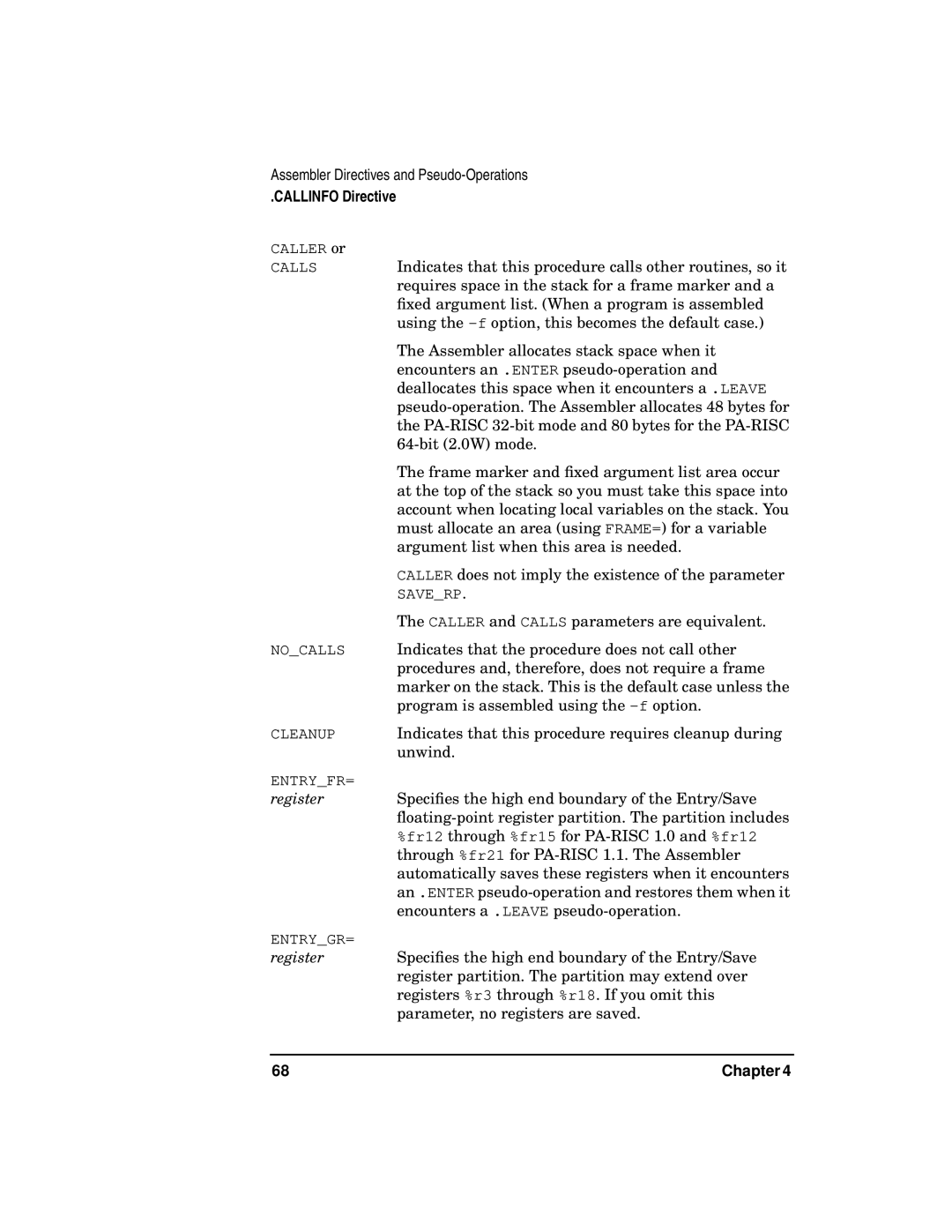Assembler Directives and
.CALLINFO Directive
CALLER or | Indicates that this procedure calls other routines, so it |
CALLS | |
| requires space in the stack for a frame marker and a |
| fixed argument list. (When a program is assembled |
| using the |
| The Assembler allocates stack space when it |
| encounters an .ENTER |
| deallocates this space when it encounters a .LEAVE |
| |
| the |
| |
| The frame marker and fixed argument list area occur |
| at the top of the stack so you must take this space into |
| account when locating local variables on the stack. You |
| must allocate an area (using FRAME=) for a variable |
| argument list when this area is needed. |
| CALLER does not imply the existence of the parameter |
| SAVE_RP. |
| The CALLER and CALLS parameters are equivalent. |
NO_CALLS | Indicates that the procedure does not call other |
| procedures and, therefore, does not require a frame |
| marker on the stack. This is the default case unless the |
| program is assembled using the |
CLEANUP | Indicates that this procedure requires cleanup during |
| unwind. |
ENTRY_FR= |
|
register | Specifies the high end boundary of the Entry/Save |
| |
| %fr12 through %fr15 for |
| through %fr21 for |
| automatically saves these registers when it encounters |
| an .ENTER |
| encounters a .LEAVE |
ENTRY_GR= |
|
register | Specifies the high end boundary of the Entry/Save |
| register partition. The partition may extend over |
| registers %r3 through %r18. If you omit this |
| parameter, no registers are saved. |
68 | Chapter 4 |
